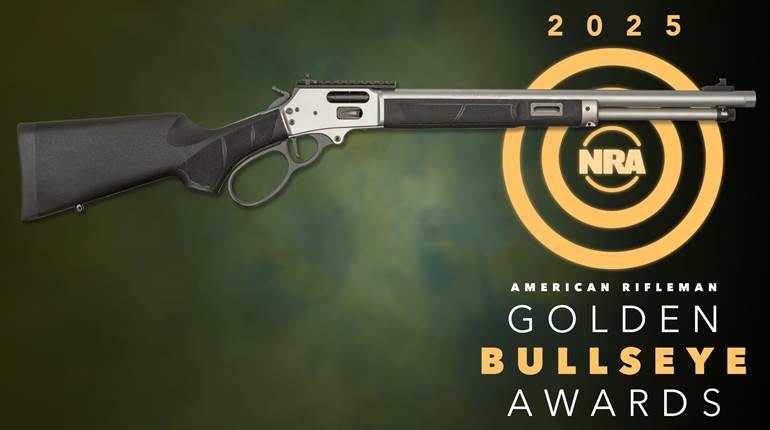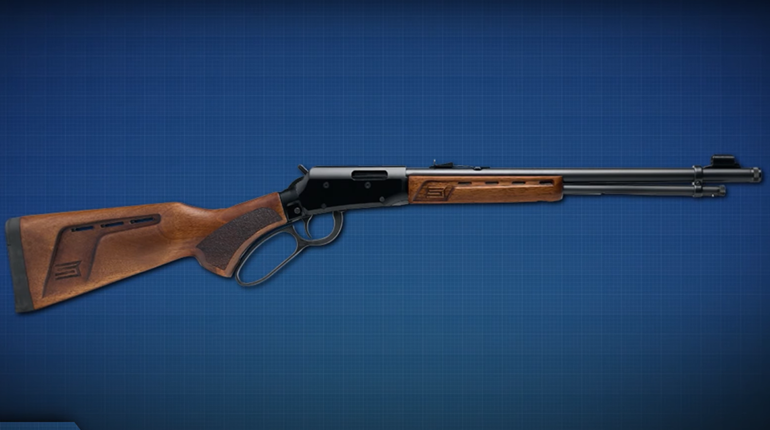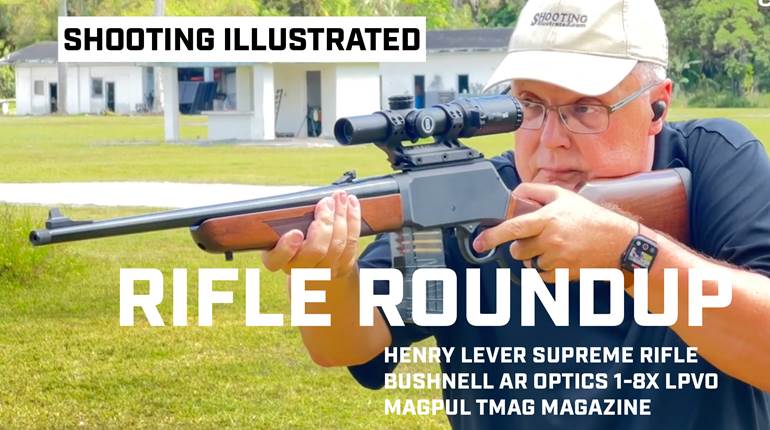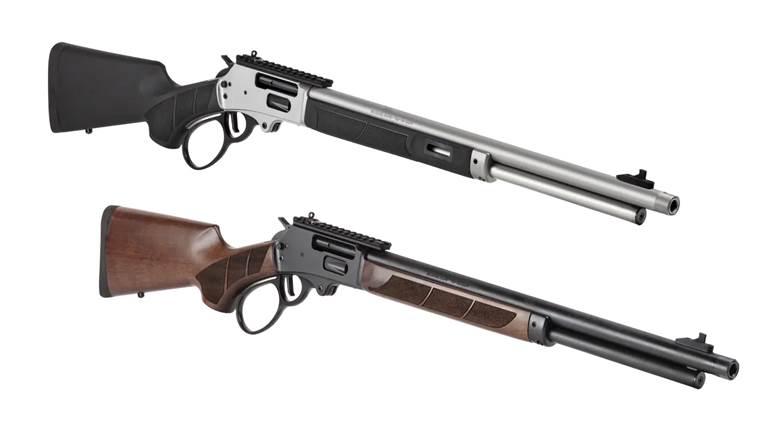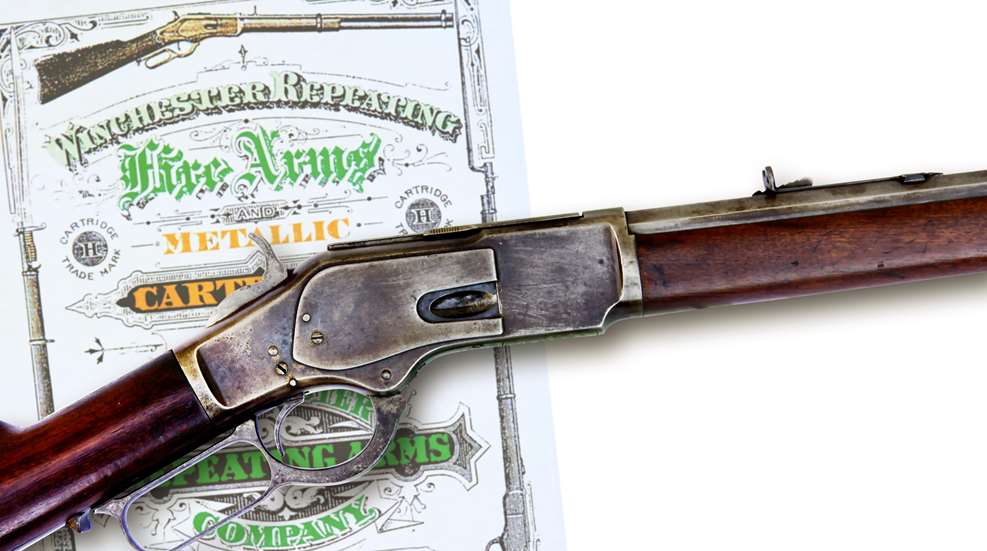
In 1919, Edwin Pugsley, an engineer at Winchester Repeating Firearms Co.—who, in later years, would become its vice president, bring the Browning Automatic Rifle (BAR) to fruition and help develop the M1 carbine—came up with one of the firearm industry’s greatest slogans. As part of an international Winchester marketing campaign, he penned this immortal headline: “The Gun That Won The West.”
Pugsley was correct in using the past tense for this now-famous phrase, for, by that time, the West had pretty much already been won. And whether or not Pugsley was specifically referring to the Winchester Model 1873, that gun became indelibly linked to the slogan, given its role in the settling of the American frontier and its use by legendary notables including: William H. Bonney (Billy the Kid), who prominently holds a ’73 carbine in the only known photograph of him; Theodore Roosevelt, who, while ranching in Dakota Territory, referred to his half-round-half-octagon-barreled .32-20 Win. ’73 Short Rifle as his “rabbit gun”; and William F. ”Buffalo Bill” Cody, who unabashedly dubbed his Winchester ’73 “The Boss.”
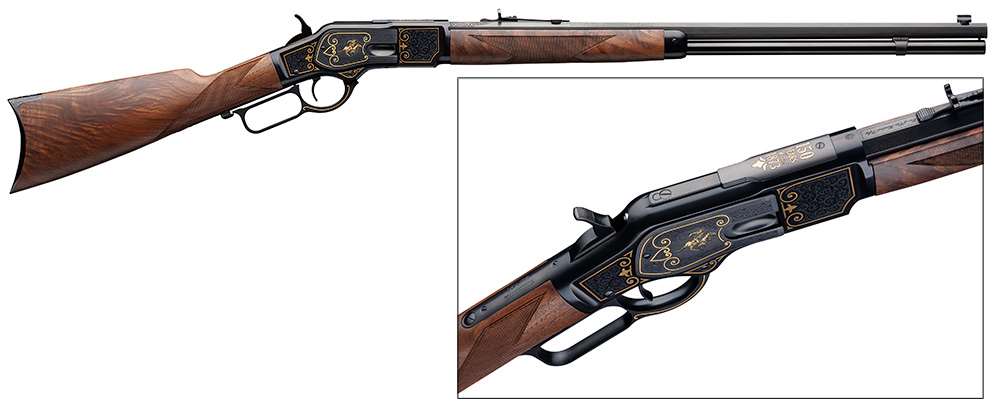
And yet, somewhat ironically, soon after Pugsley’s now-immortal tribute to the Winchester ’73, the gun was discontinued (it was last catalogued in 1920), thus ending a 47-year run that produced a total of 720,610 rifles, carbines, sporting rifles and muskets, but with enough guns remaining in inventory to keep them on dealers’ shelves until 1924. Yet although eventually overshadowed by the Winchester Models 1886 (which, in turn, made the Winchester 1876 obsolete), and the 1892, 1894 and 1895 lever-actions, the lightweight, well-balanced and fast-shooting Winchester ’73 remained a favorite with hunters, ranchers, farmers, adventurers and both lawmen and outlaws alike. Indeed, it has become a symbol of the American West, but its success was actually born out of failure.
When New England shirtmaker Oliver Fisher Winchester acquired the Volcanic Repeating Arms Co. in 1857, he found himself in possession of a mechanically inferior finger-lever rifle, an inventory of parts and a rented factory. Winchester was left holding a firearm prone to jamming and that fired an underpowered and unreliable bullet based upon the earlier Hunt Rocket Ball, but with a rudimentary self-contained primer.
The Volcanic did have one thing going for it, however—its action was designed to cycle and chamber multiple rounds without reloading. In an era of single-shot muzzleloaders, and with a smoldering American Civil War on the horizon, Winchester saw the obvious potential of this singular feature. Consequently, he relocated his factory to Connecticut, renamed it the New Haven Arms Co. and hired firearm designer Benjamin Tyler Henry to be his plant superintendent, with the admonition to “see if you can make this fool gun work.”
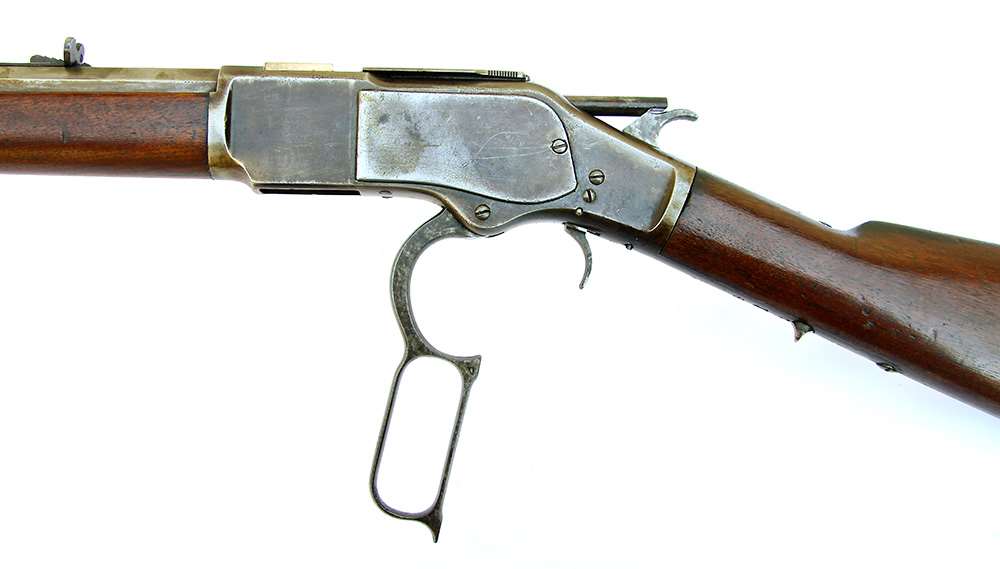
Henry realized that one of the Volcanic’s major problems was its ammunition. Consequently, he set about transforming it with a 216-grain, .44-cal. pug-nosed bullet held in a rimfire-detonated copper case containing 13 grains (later increased to 28) of blackpowder. To handle this larger, more powerful cartridge, the rifle’s receiver and toggle-link action were beefed up and strengthened so dramatically that they became the basis for future Winchester Models 1866, 1873 and 1876.
What finally emerged in 1860 was a 15-shot firearm with a brass frame (although a few hundred early rifles were made with iron frames) and a 24" barrel that was christened with the name of its inventor, the Henry Repeating Rifle, and the proprietary cartridge it fired became the .44 Henry Flat. Although not overly powerful by today’s standards, the Henry offset this by offering previously unheard-of firepower. “Sixty Shots Per Minute” an 1862 broadside boasted, obviously not taking into account the time needed for reloading. The announcement further proclaimed, “A resolute man, armed with one of these Rifles, particularly if on horseback, CANNOT BE CAPTURED.”
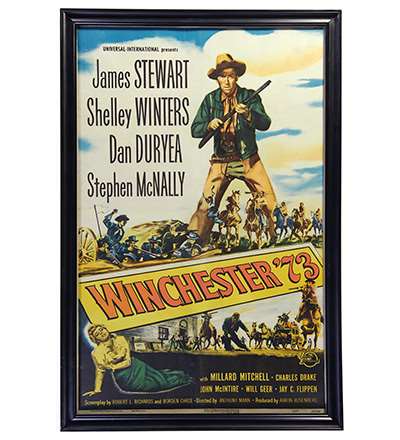
Obviously, one would think that the acceptance of the Henry rifle would have been immediate, but such was not the case. For one thing, the Henry’s price tag of $47 put it out of reach for many, especially when most military muzzleloaders were selling for $16 apiece. For another, the Army was not enamored with the Henry’s more complicated mechanics when compared to its current U.S. Springfield 1861 rifle muskets. And, finally, production and distribution problems kept Henry rifles from entering the mainstream until 1862. At this point, a number of solders on both sides of the Civil War privately purchased the rifles, after which the guns eventually made their way westward to play a part in the settling of the frontier. In all, approximately 13,500 Henry rifles were produced until discontinued in 1866 to make way for the “Improved Henry Rifle” that year.
As its name suggests, the Improved Henry solved many of the Henry rifle’s shortcomings. To eliminate an awkward and potentially dangerous loading procedure of dropping cartridges down the tubular magazine from the muzzle end of the rifle, Nelson King, Winchester’s new superintendent (B. Tyler Henry had departed the company after a failed takeover attempt and accusations of Winchester cheating him out of royalties), developed a patented loading gate in 1866 that permitted cartridges to be loaded from the right side of the receiver. In addition, a wooden fore-end was added to protect the shooter’s supporting hand from a barrel that grew hot when multiple shots were fired. The Improved Henry became the first repeating rifle to bear the Winchester name, reflecting the former New Haven Arms Co.’s reorganization as the Winchester Repeating Arms Co.
Unfortunately, in addition to the brass receiver it inherited from the Henry Rifle, the Model ’66 was still saddled with the anemic .44 Henry Flat chambering and soft copper rimfire case, which often split upon firing. But all that was about to change with the advent of the Winchester New Model of 1873, as it was initially called, which came out concurrently with a brass-cased, slightly bottlenecked .44-40 Win. centerfire cartridge, which could very well be called “The Cartridge That Won The West.” Since it could be reloaded, and became so popular, more firearms were chambered for it than any other during the last quarter of the 19th century. Small wonder that soon after its introduction, Winchester began offering reloading kits and even an all-in-one reloading tool invented by William Wirt Winchester, Oliver Winchester’s son, to go along with its .44 “Central Fire” cartridge.

Photos courtesy of Rock Island Auction.
The .44-40 Winchester Center Fire (WCF) consisted of a 200-grain, soft-lead, .44-cal., round-nosed bullet propelled by 40 grains of blackpowder. The resultant 1,310 f.p.s. was only slightly more powerful than the .44 rimfire, but the .44-40 soon proved itself better as both a man-stopper and for medium-size game out to 100 yards—after that, the bullet dropped dramatically, as much as 5 feet at 200 yards. Nonetheless, thanks to today‘s sport of Cowboy Action Shooting and the popularity of shooting vintage and replica Colt- and Winchester-style guns, it is a cartridge that is still being factory-loaded.
The Winchester Model 1873 and the .44-40 Win. cartridge were literally made for each other. In fact, the popularity of the .44-40 was due primarily to the advent of the Winchester ’73—and vice versa. Although it used the same toggle-link action as its two lever-action predecessors, the frame of the Model ’73 was now made of iron (changed to steel in 1884) and featured removable receiver sideplates, as well as a sliding dustcover that protected internal parts from the elements, but which slid back as the action was opened. Four different models were offered: a 24"-barreled Sporting Rifle; a pistol-gripped Special Sporting Rifle with fancy checkered walnut; a 20"-barreled saddle ring carbine; and a full-stocked 30"-barreled military Musket—the latter reflecting Oliver Winchester’s failed goal of landing a U.S. government contract (although a number of muskets ended up being purchased by various foreign agencies).
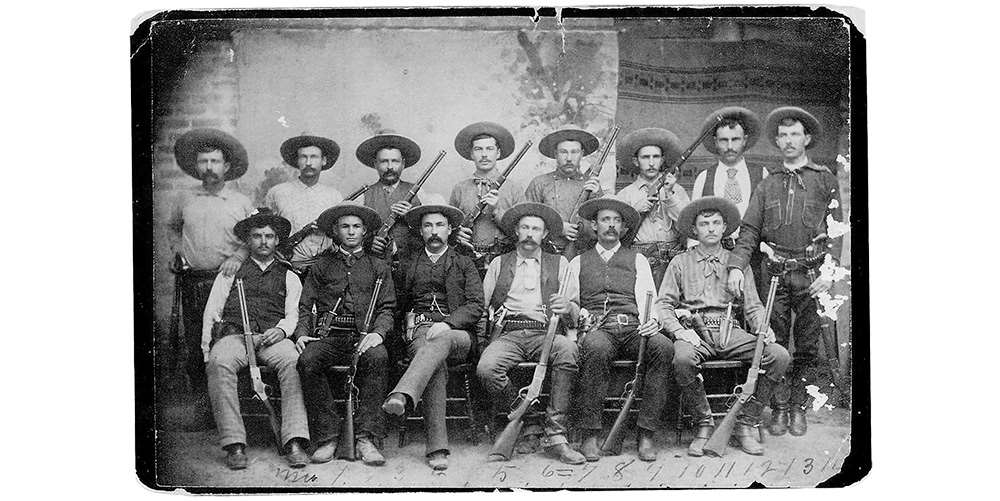
The Winchester 1873 also caused the Improved Henry to be renamed the Model 1866, for as the late George Madis pointed out in The Winchester Book, “Until the introduction of the Model 1873, the Model 1866 was the Winchester; there were no others.” Now there were two, which had to be differentiated. This set a pattern for naming Winchester’s lever-actions after the year in which they were introduced, a system that remained in place throughout the 19th century.
Yet, in spite of its dramatic improvements, according to Madis, only 18 Winchester ’73s were sold in 1873, and just 108 more in 1874. No doubt this was due to early production difficulties, but this lack of sales may also be attributed to the fact that Winchester did not advertise its Model 1873 until the rifle, carbine and musket were finally featured on the cover of its 1875 catalog. That same year, Winchester took out an ad in Forest and Stream magazine that depicted the 1873 Sporting Rifle as “The Hunter’s and Sportsman’s Favorite,” but not mentioning the gun by name!
Initial prices that year were $40 for the Sporting Rifle with round barrel and plain trigger, $42 for the Musket and $38 for the carbine. Extra-length barrels, up to 36" for the musket, could be had for a dollar an inch (rifles could be ordered with barrels as long as 32"), and bull barrels cost $5 extra. Octagon and half-octagon barrels were $2.50 additional. Carbines with barrel lengths shorter than 20", known as Baby Carbines then but called “Trappers” by collectors today, could be ordered with barrels as short as 12". Standard finish was blued with a casehardened hammer, lever, trigger and some internal parts, but casehardened receivers could be had for a dollar more. By 1875, Winchester was offering a plethora of extra-cost features, including fancy checkered wood, sling swivels, nickel- or gold-plating, engraving, special buttplates and target sights—in essence giving the Model ’73 the potential for becoming a truly custom firearm. Indeed, a shooter could have anything from a plain working gun to an elaborate showpiece, if he were willing to pay the price; in the process, this created almost endless variations for collectors today.
Winchester’s 1875 catalog, of which reprints are available from Cornell Publications (cornellpubs.com), is full of glowing testimonies as to the superiority of the company’s new Model 1873, which is somewhat surprising given the relatively small number of guns that had been sold up until that time. But, to help spur sales of its latest lever-action, Winchester devised a unique promotion that it announced in that same catalog:
The barrel of every sporting rifle we make will be proved and shot at a target, and the target will be numbered to correspond with the barrel and be attached to it. All of these barrels that are found to make targets of extra merit will be made up into guns with set-triggers and extra finish and marked as a designating name, “One of One Thousand,” and sold at $100.00. The next grade of barrels, not so fine, will be marked “One of One Hundred” and set up to order in any style at $20.00 advance over the list price of the corresponding style of gun.
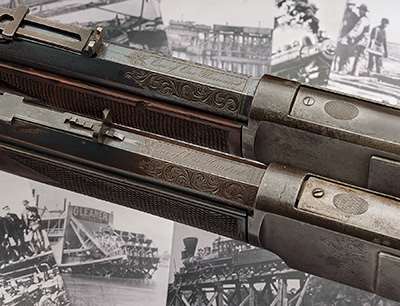
Not counting the dramatic increases in price over the basic cataloged gun, this misfired promotion gave the unintended impression that not all Model 1873s were equal—evidently, some guns were better than others. Needless to say, this high-priced campaign appealed to a very limited audience, and, as a result, only between 132 and 136 “One of One Thousand” and just eight “One of One Hundred” Model 1873s were sold before Winchester canceled the promotion two years later, although a few One of One Thousands continued to be ordered as late as 1893. Today, of course, such guns can fetch prices well into the six-figure range.
Extra-cost options aside, it didn’t take long for the reputation of the Model 1873 to spread. Demand for the Winchester ’73 increased even more in 1878 when Colt began chambering its already-renowned Single Action Army in .44-.40 Win., making it a natural to pair alongside the Winchester ’73. Realizing a good thing, in 1880, Winchester introduced a .38-40 Win. chambering for its ’73 and added a .32-20 in 1882, further increasing compatibility with the Single Action Army. In 1884, the Winchester ’73 also became the first .22-cal. repeating rifle in America, when it was chambered for the .22 Short and .22 Long rimfire (not .22 Long Rifle); 19,552 of these smallbore lever-actions were made before being discontinued in 1904.
By the 1890s, with competition from the Winchester Model 1892—which was initially offered in the same .44-40, .38-40 and .32-20 chamberings as the Model 1873—the ’73’s prices had dropped. For example, the Sporting Rifle was $18 and the Model ’73 carbine’s price was $17.50, enabling sales to remain relatively steady until it was discontinued. Then, in 1950, although the Winchester ’73 had long been out of production, Hollywood brought it back into the spotlight when Universal Studios released the motion picture, “Winchester ’73,” starring James Stewart and co-starring a Winchester One of One Thousand.
However, like many things in Hollywood, the gun wasn’t exactly what it was purported to be. Instead, a standard Winchester ’73 rifle and two identical backup guns were restocked with fancy wood and given non-typical gold-washed engraving to represent a One of One Thousand rifle in the movie. In the motion picture, which was adapted from a story by Stuart N. Lake, who had also authored the semi-fictional book, Wyatt Earp: Frontier Marshal, Stewart wins the coveted rifle in a shooting contest, only to have it stolen (I always wince at that scene), with it then passing through eight different hands before Stewart finally gets it back at the end of the movie.
To promote the film, Universal launched a nationwide search for owners of authenticated One of One Thousand Winchesters. “Remember, we don’t want your ‘One of One Thousand’ Model 73,” the studio affirmed. “We are only trying to find out how many of them are still in existence.” The first 20 owners who provided proof of ownership of a “One of One Thousand” received a new Winchester Model 94 carbine, as original Winchester ’73s were no longer produced and replicas didn’t exist yet. The promotion proved to be successful, as 22 bona fide One of One Thousand Winchester ’73s were discovered, giving gun collecting—especially for Winchesters—renewed impetus.
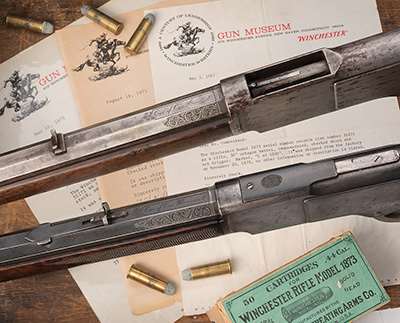
It took another 63 years, however, for Winchester to officially reintroduce its Model 1873 to the shooting public. In 2013, Winchester Repeating Arms, under license from Olin Corp. and manufactured by Miroku of Japan for FN/Browning, brought out a 20" round-barreled Short Rifle with all-blued furniture and crescent buttplate. The line has since been expanded to currently include: a casehardened version; as well as a “performance-tuned” Competition short-stroke lever-action carbine in .45 Colt and .357 Mag. (chamberings that obviously were never available in original guns); a standard Saddle Ring Carbine in .45 Colt and .357 Mag. as well as .44-40 Win.; a Deluxe Sporting rifle in the same cartridges but with a half-round-half-octagon barrel; and a Sporter Rifle with a 24" octagon barrel and available in straight-grip or pistol-grip configurations, either casehardened or blued, and chambered in .357 Mag., .45 Colt or .44-40 Win. And, just as the Winchester ’66 was an “Improved Henry,” these current versions could very well be called “Improved Winchester ’73s,” as they feature smoother actions, re-designed inertia firing pins for added safety, a slightly re-designed brass cartridge lifter to eject cases up and away from the shooter and, thankfully, no unsightly tang or button safeties, thus preserving the original Winchester ’73’s traditional hammer half-cock.
And although Winchester is currently focused on its newer firearms, it was not about to let the 150th anniversary of the Winchester ’73 to pass unnoticed. To honor this milestone, the company is producing a limited number of 150th anniversary commemorative Model 1873 rifles, featuring special gold-enhanced and engraved blued receivers, levers and dustcovers, and Grade V/VI walnut straight grip, checkered stocks. Only 150 guns will be produced, at a suggested retail price of $3,660, although the actual release date hadn’t been announced as of this writing.
Nonetheless, from vintage collectables to current recreations and commemoratives, for fans of the Winchester ’73, it looks like “The Gun That Won The West” is still winning it.












